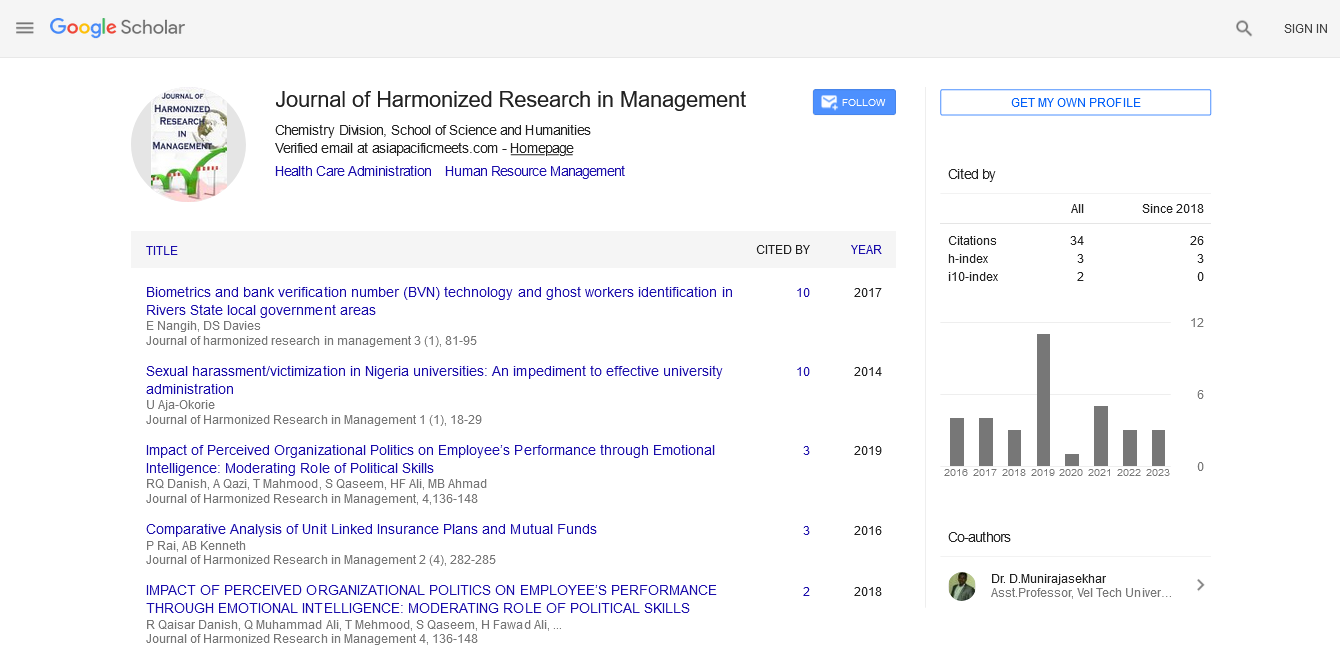USING THE PATH-GOAL THEORY OF LEADERSHIP TO ENHANCE ADMINISTRATION OF NURSING CARE SERVICE
Abstract
Author(s): Goodman John Ani, Nwodoh, C. Oliver, Pat U. Okpala, Ephraim O. Dyages, Moses I. Akese
The organization of nursing services is provided through a system of leadership necessary to coordinate nursing care. Leaders, to be effective, engage in behaviors that complement subordinates’ envi ronments and abilities in a manner that compensates for deficiencies and is instrumental to subordinate satisfaction and individual and work unit performance. Robert J House’s Path-goal theory proposes that the leader can affect the performance, satisfaction, and motivation of workers in different ways like offering rewards for achieving performance goals, clarifying paths towards these goals and removing obstacles to performance. The path–goal theory describes the way that leaders encourage and support their followers in achieving goals. The leaders clarify the path so subordinates know which way to go, remove roadblocks that are stopping them going there and increasing the rewards along the way. The leaders do this using any or a combination of directive behavior, supportive behavior, participative behavior or achievement-oriented behavior. Path goal theory is applied successfully in nursing education, research, practice and administration. In performing the administrative roles, the nurse administrator is careful to delineate roles for the followers, generate performance targets, remove impediments along the path, and is consistent about rewards and punishments for performances. Nursing research is practice or discipline-oriented and is essential for the continued development of the scientific base of professional nursing practice Path-goal theory applied in nursing education promises enhanced learning outcome and effective mentorship. The crystallization of all activities in nursing administration, nursing education, and nursing research takes place in nursing practice. This is where all efforts put into all the other departments reflect in enhanced patient outcome. The overall outcome of application of path-goal theory of leadership is satisfied nursing staff, attainment of organizational goals and positive patients care outcome. Specifically, path-goal theory of leadership leads to improved patient safety outcomes (Tregunno et al, 2009) healthy work environments (Shirey, 2009), job satisfaction (Sellgren et al, 2007); lower turnover rates (Gelinas and Bohen, 2000), positive outcomes for organizations, patients (Wong and Cummings, 2007) and healthcare providers (Cummings et al, 2005). It is recommended that Nurse leaders should be encouraged to adopt the path-goal theory in all relevant levels and areas of application.

Google Scholar citation report
Citations : 92
Journal of Harmonized Research in Management received 92 citations as per google scholar report









